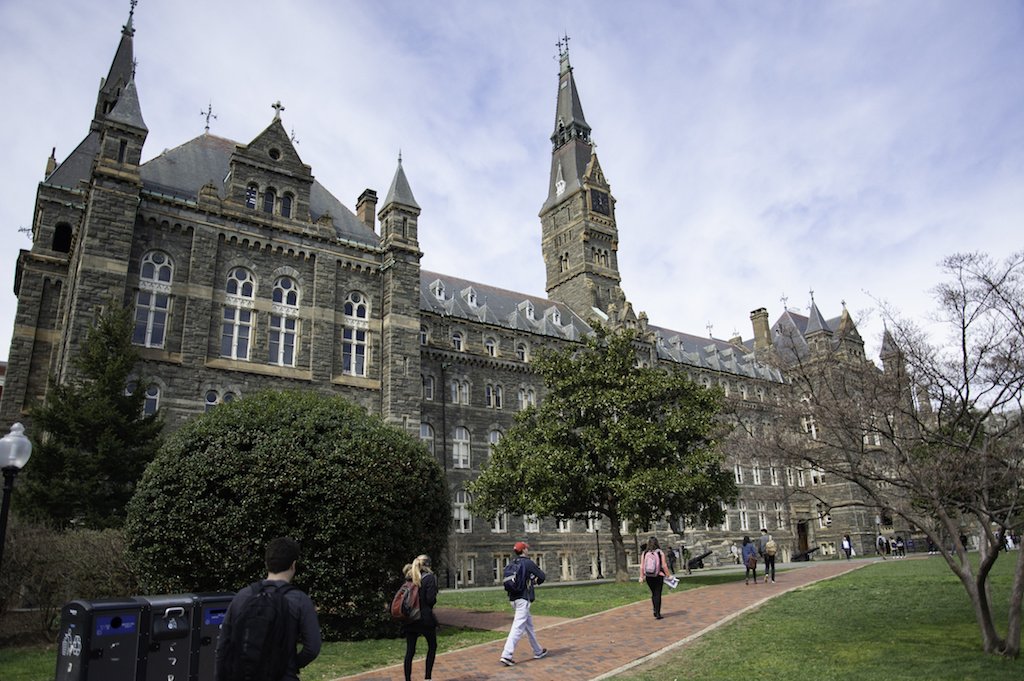Kevin Carey, Vice President for Education Policy and Knowledge Management at New America, penned an opinion piece for The Chronicle of Higher Education arguing that too many policymakers treat college degrees like assets.
Sadly, the subtitle to this article, “It shouldn’t be up to students to search for evidence that their credentials might be a rip-off,” provides an indicator toward the notable bias of Mr. Carey’s.
In the introductory paragraph, Mr. Carey writes that “college degrees are assets. Or at least they are sufficiently asset-like that many people are willing to borrow large amounts of money to obtain them.”
Mr. Carey continues to write “because people tend to get their first degrees and homes earlier in adult life when they have fewer financial assets and less established credit, it makes sense for the government to subsidize the loans used to acquire them.”
How ironic that Mr. Carey compliments the government for subsidizing student loans but does not write that the real reason tuition and loan balances are so high is that Congress increased loan limits to levels accommodating higher tuitions at primarily private non-profit universities. Had loan caps remained the same in the last three decades as they were in the 1980s, non-profit universities would not have increased their tuition at the higher-than-average family income rate of increase.
Because Americans have embraced the degree as an asset theory, Mr. Carey writes that we have created a higher education policy architecture that does not work.
According to Mr. Carey, asset-minded policymakers see higher education policy in terms of prices. They believe that we can help students by making college cheaper or free. We can also lower the cost of borrowing by subsidizing interest rates or forgiving outstanding debt.
Policymakers who are less inclined to provide free tuition and loan forgiveness see college debt in moralistic terms. Students willingly borrow; therefore, they should repay their loans.
Mr. Carey argues that degrees are not fungible as they cannot be resold or bundled or securitized. According to him, they do not yield anything other than memories. People cannot sell their degrees and use the proceeds to repay their loans.
I disagree with Mr. Carey’s comment that college degrees do not yield anything other than memories. For many employers, the degree itself is a signaling device. If you completed a four-year degree, that accomplishment distinguishes you from the population of people who did not complete a four-year degree. It’s even more meaningful if you happened to complete a degree with a direct link to a profession like nursing, accounting, or engineering.
Mr. Carey writes that most people believe that college is a unitary form where students are matched to the institution that best fits them and tuition charges and financial aid reflect the cost of a degree and what families can pay.
It would be nice if college were a benevolent system like the one described above. The fact is that most colleges spend a lot of money to attract students to fill their freshman classes and in some cases, to transfer to the institution. They also spend a lot of money on merit scholarships to attract prospective students. College advising is woefully underfunded at all but the wealthiest public and private schools. Many students are likely swayed in their choices by peers, family, and glossy brochures or advertisements and not a scientific match to the best fitting institution.
Mr. Carey writes that college degrees are more like a combination of services and intellectual property provided by a free market that is prone to failure. The 1,000,000 people who default on their loans annually is evidence of this market failure. According to Mr. Carey, none of these borrowers thought they would default on a loan when they began college.
Why do these borrowers default? Mr. Carey writes that it’s because their asset isn’t providing the promised returns. First, Mr. Carey does not differentiate between college grad borrowers who default and non-grads who default. Nearly 45% of borrowers with no degree default on their loans while only 8 percent of bachelor’s degree graduates default according to the National Center for Education Statistics.
Mr. Carey insinuates that the defaults are due to poor returns on the investment. Clearly, a smaller percentage of grads default versus nearly half of all non-degree completers. Mr. Carey claims that none of the borrowers thought that they would default on a loan. Maybe that’s the case. However, my conclusion is that the defaults are related to non-degree completion, and I’m willing to bet that many people who headed off to college were uncertain as to whether or not they would enjoy it or be able to complete a four-year degree.
Mr. Carey asks why people enroll in colleges where impoverishment and financial calamity are the most likely outcomes. I argue that there is data supporting the fact that lower income students are less likely to complete a degree. He argues because it’s hard to see inside a college when you have not gone to one before. He also argues that it only happens once.
This latter point demonstrates that Mr. Carey is one of many higher education critics who ignore the fact that 37 percent of college students transfer at least once in their college careers (and half of those transfer more than once per the National Student Clearinghouse).
Mr. Carey cites data from the College Scorecard that indicates there are 780 institutions where fewer than one-third of students have annual earnings above $25,000 six years after beginning college. Note that I italicized beginning.
The College Scorecard currently tracks earnings for the first and second years after graduation and only for students who borrow money through the Federal Student Aid program. Approximately 40 percent of bachelor’s degree earners graduate within four years. Approximately 60 percent of bachelor’s degree earners graduate within six years.
Those statistics indicate that nearly one-third of bachelor’s degree earners are taking a year to two years longer to graduate. I’m certain that the College Scorecard has not refined its data collection scheme to treat this group differently than the group that graduates in four years. If 15 percent of bachelor’s degree graduates proceed to enroll in master’s programs, the system doesn’t take that into account either. Students still enrolled in college, undergrad, or grad school, are not going to earn as much as students who have graduated and are working full-time.
Mr. Carey misleadingly uses these statistics to support his argument that the government needs to step in and provide the skepticism that consumers are unable to. In addition to citing the Obama administration’s Gainful Employment rule as an attempt to rein in aggressive for-profit institutions (note: I supported and still support that rule provided it applies to all colleges and universities), Mr. Carey notes that the Gainful Employment rule did nothing to rein in the fast-growing market for professional master’s degrees provided by public and nonprofit universities.
He also notes that many of these programs are driven by for-profit corporations that act as silent partners and marketing middlemen in exchange for profits. He doesn’t mention the culprits that allow almost unlimited borrowing at the graduate level; that would be Congress and the Department of Education.
Mr. Carey argues that for college degrees to pay off for everyone, the federal government needs to construct a strong floor of consumer protection that applies to all colleges, great and small.
At least Mr. Carey’s final recommendation does not single out for-profit institutions even though he disparages the sector earlier in his article. However, his medicine (strong consumer protection) doesn’t support the cure.
The bulk of loan defaults are from students who don’t complete college. I tried to find information breaking out student loan defaulters based on how many credits/years of college they completed and could not find that information. I believe that the vast majority of loan defaulters owe small amounts, likely because they did not complete many semesters of studies.
I suggest that the best thing that the federal government could do is to encourage stronger preparation of high school graduates for college. I continue to support an increased Pell Grant for low-income students versus increasing the maximum loan amounts. I also support reducing the caps on loans which would cause students to take a more serious look at lower-cost schools.
There are numerous studies indicating the most popular reasons for students not completing college. Addressing those issues would be more productive than adding another layer of costly regulations whose cost will be passed on to students in the form of higher tuition.











